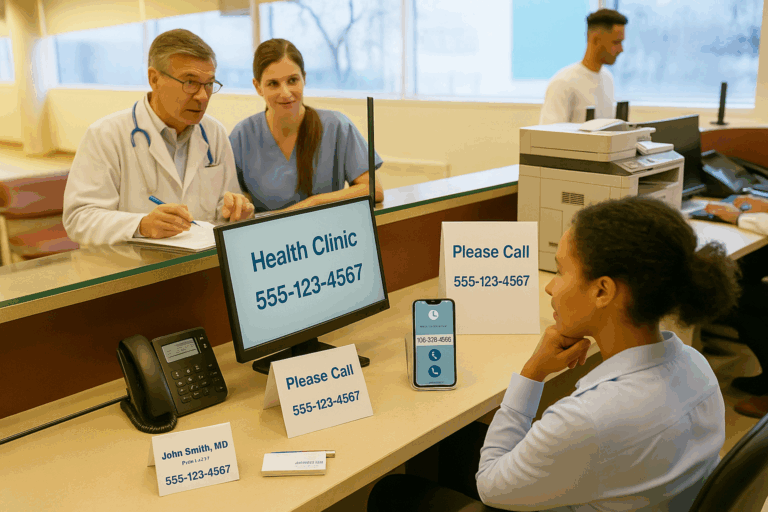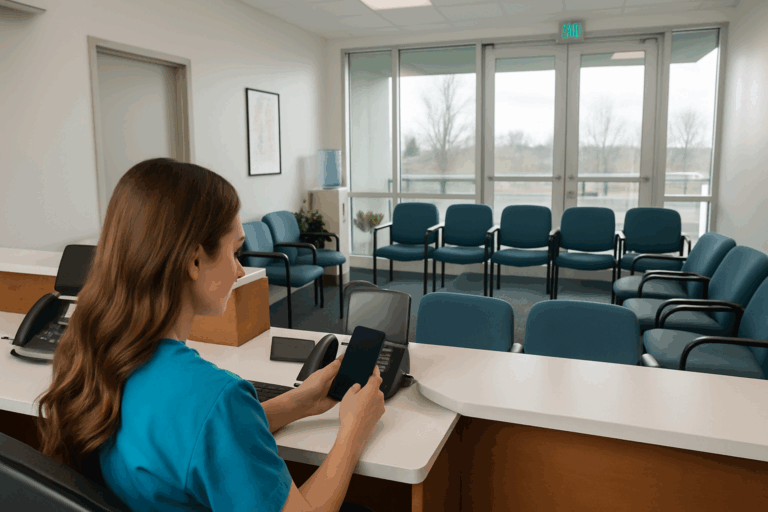Eight million job openings in the United States should be good news — except when there are only 6.8 million unemployed workers to fill them. Those numbers, courtesy of the U.S. Chamber of Commerce, refer to jobs in general, but the healthcare labor shortage has been making headlines over the past few years.
The overall trend of a declining healthcare workforce was severely exacerbated by the COVID-19 pandemic, especially for the frontline workers who have endured it. Healthcare staff shortages are projected for every state by 2026 when the U.S. will lack an estimated 3.2 million healthcare workers.
One widely cited study projects a shortfall of 510,394 registered nurses by 2030. Additionally, approximately 1.2 million new registered nurses will be needed to address that deficit. Another study forecasts a shortage of about 100,000 critical healthcare workers by 2028.
Some states—North Dakota, Rhode Island, South Carolina, and West Virginia—are experiencing worse shortages than others. Most rural states—Utah, Vermont, Tennessee, and remote territories like Guam and the Northern Mariana Islands—have the highest per capita scarcity of medical professionals.
Median support staff in physician-owned primary care practices has dropped by more than three full-time-equivalent (FTE) roles. How can those medical practices and others efficiently manage the influx of patients while maintaining high satisfaction and engagement levels?
Maintaining effective provider-patient communication is possible when the right resources are in place. Even if you have a practice with multiple locations, you can employ solutions that meet your physicians’ and patients’ preferences for convenience without breaking your budget.
Mitigating Common Problems Through VoIP for Healthcare
Most healthcare practices receive hundreds of calls daily. Having fewer staff members responsible for more tasks typically results in lengthy wait times for patients, which decreases satisfaction.
Another frustrating occurrence for patients is navigating multiple menu options when they call their healthcare provider. A simple call to schedule an appointment can lead to being routed to the wrong staff member, after which the patient abandons the process altogether.
Utilizing a HIPAA-compliant phone system powered by Voice Over Internet Protocol (VoIP) technology mitigates these problems, especially when the platform is designed for healthcare. The technology allows you to make voice calls using a broadband Internet connection instead of a regular (or analog) phone line.
The call routing feature of a healthcare-specific VoIP phone system streamlines your practice’s communication flow by efficiently managing your incoming calls. This minimizes hold times for your patients while improving the satisfaction and productivity of your staff. Not only does this system ensure that patients can easily reach the right provider, but it also routes calls based on staff responsibilities.
Another valuable feature of a healthcare VoIP solution is call queueing, which enables you to manage high-volume call traffic and ensure patients can speak with the right person in a timely manner. The result is shorter wait times, fewer missed calls and a more efficient workflow.
The RingRx HIPAA-compliant VoIP enterprise-quality phone system helps you effectively manage large volumes of calls and messages, ensuring nothing slips through the cracks. Along with advanced call routing and call queues, it’s built with robust features like Auto Attendant, Ring Groups, Parking Lot and Call Pickup.
Understanding Patients’ Communication Preferences
Some patients prefer to text their healthcare provider instead of calling. Research shows that more than 85 percent of patients prefer texting to email or patient portal messages.
Patients appreciate the convenience of responding to messages at a time that suits them. Automated outreach through a HIPAA-compliant VoIP phone system allows you to focus less on administrative tasks and more on patient care. It also enables you to communicate with patients through targeted and personalized campaigns without additional staff involvement.
RingRx Outreach automates SMS text, voice and email communications for practices of all sizes. It simplifies communications with easy-to-use scheduling and automation tools that enhance patient relationships.
VoIP Phone System Perks for Physicians
Patients don’t only need healthcare during regular office hours. From requesting a prescription refill to contacting their provider about an urgent medical need, they often require communication from a medical practice when most staff is gone for the day. That’s why practices must utilize a VoIP phone system that enables timely patient connections.
At RingRx, we designed our OnCall features to manage calls correctly while eliminating administration headaches and patient delays. Personal OnCall profiles let you choose how and when your providers want to be reached when they are on call, and shift reminder notifications prompt your staff when their shift is about to begin. They also automatically notify you of coverage gaps, ensuring your patients are covered 24/7.
RingRx: Built for Healthcare
Along with such comprehensive features and capabilities, the RingRx VoIP phone system for healthcare offers many benefits, such as cost savings, scalability and improved voice quality. Our platform works with your existing mobile and desktop equipment, so you aren’t stuck paying monthly maintenance fees or investing in expensive hardware.
Schedule a demo of RingRx today to learn how VoIP can improve your practice’s communication one call at a time!




